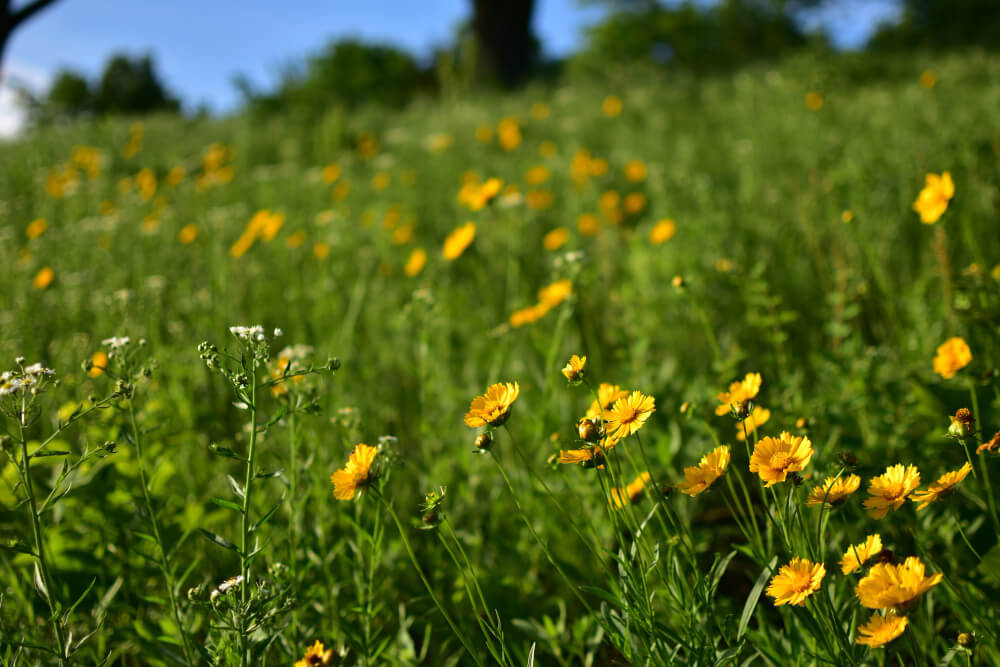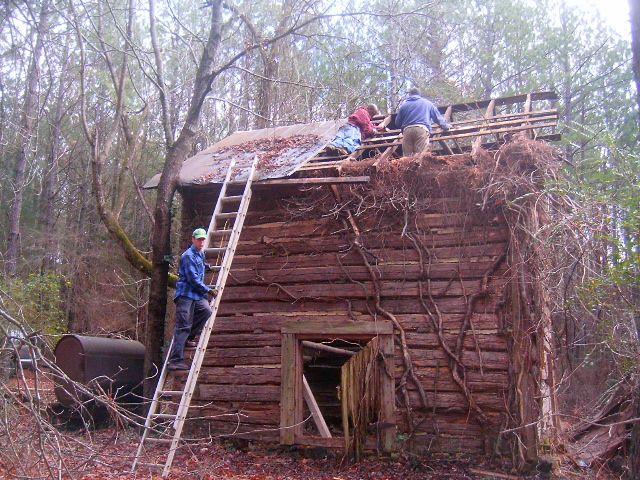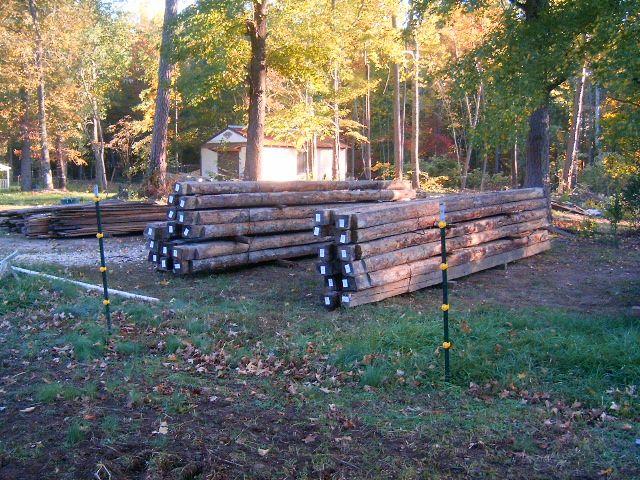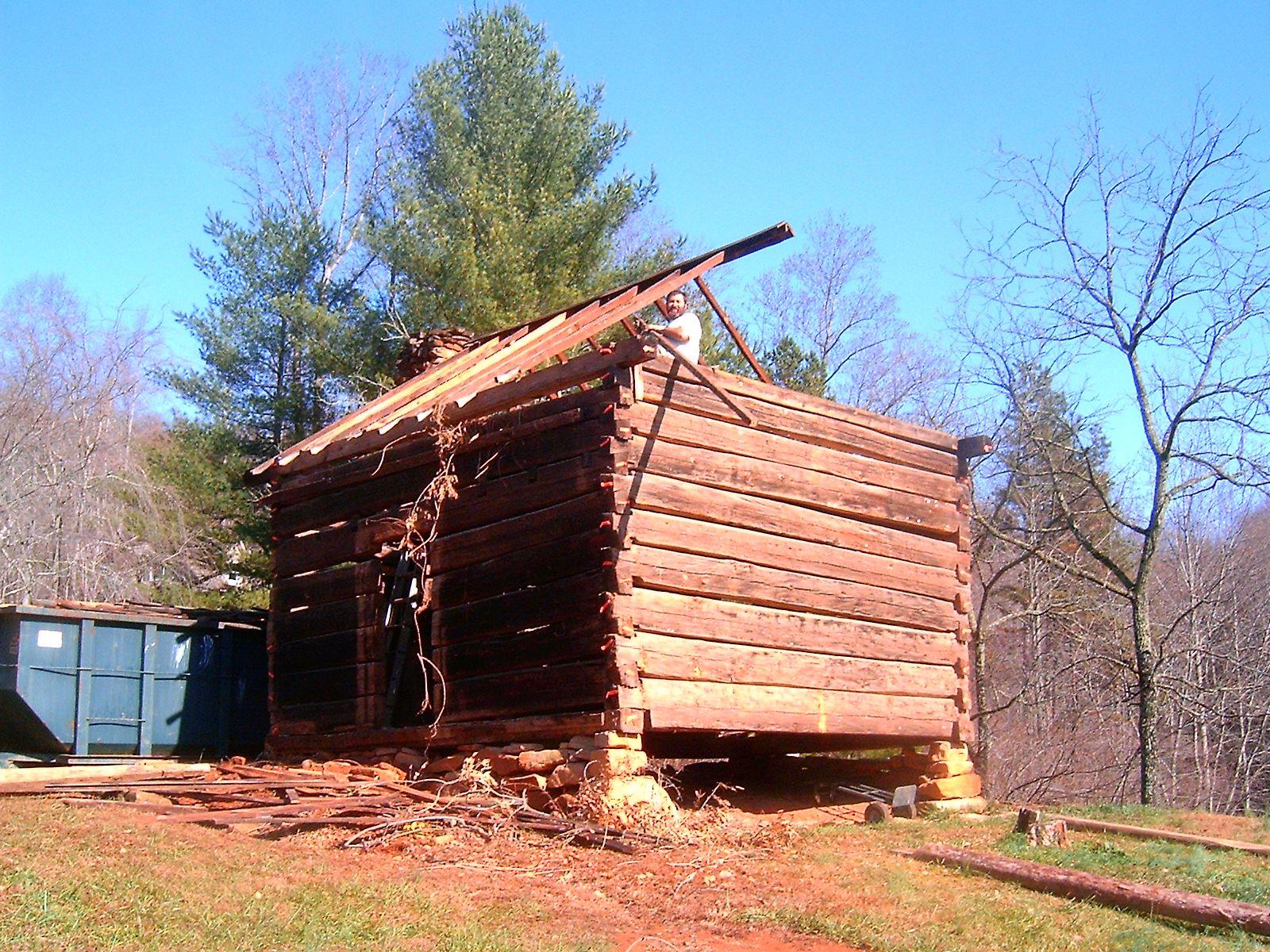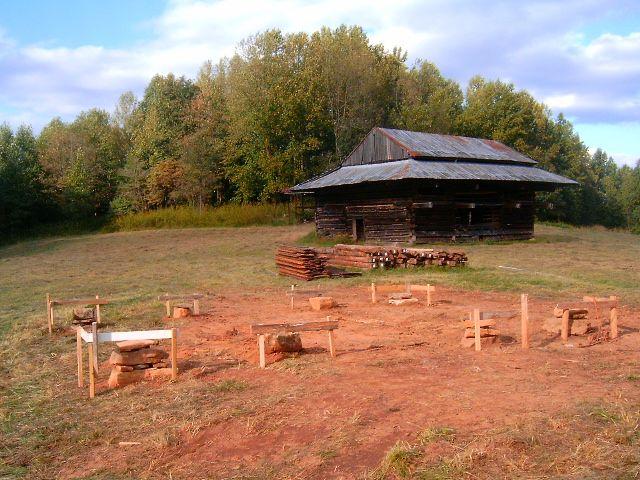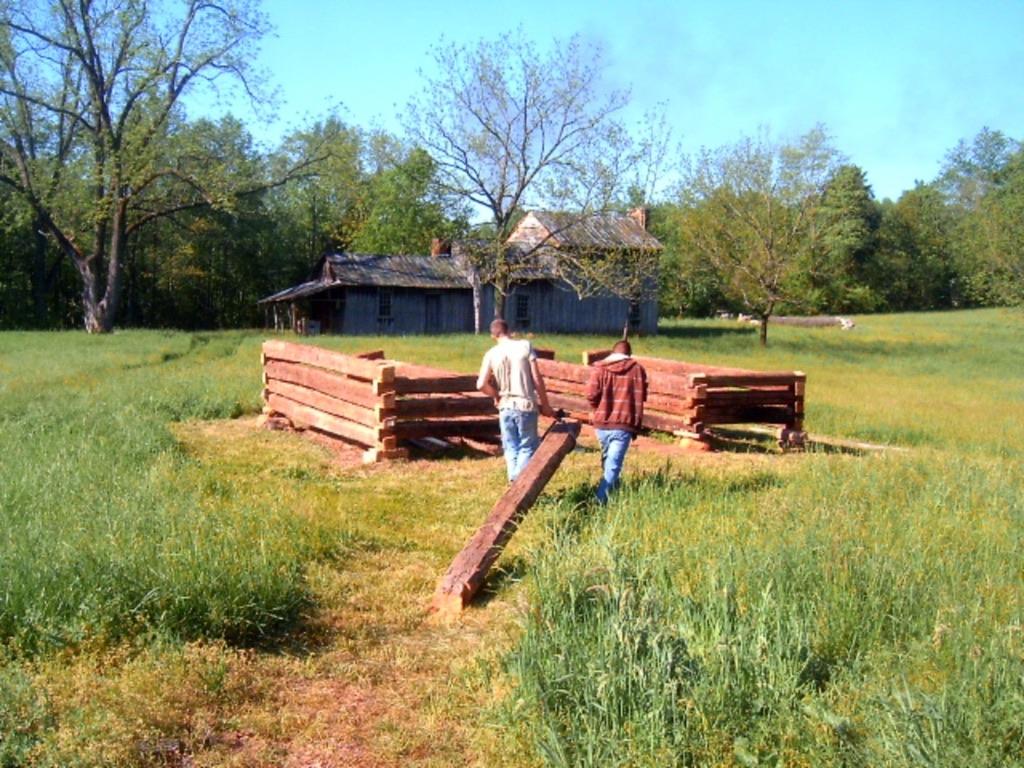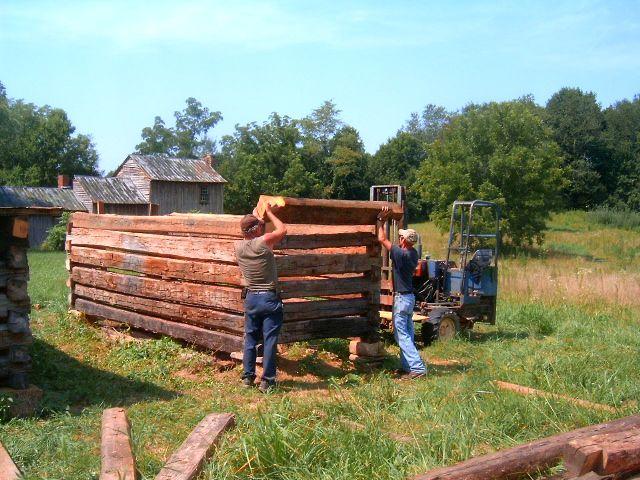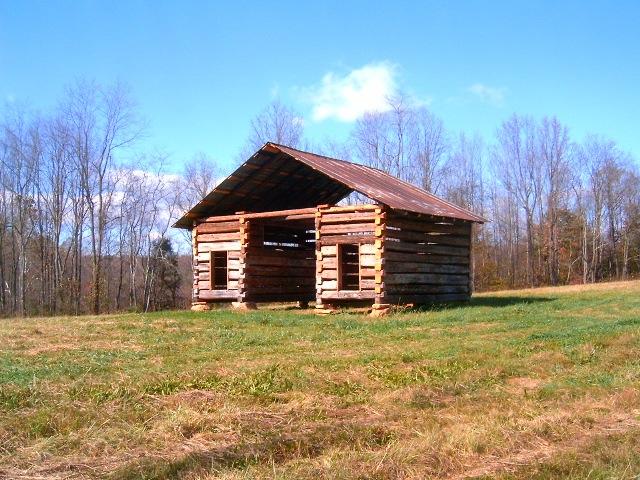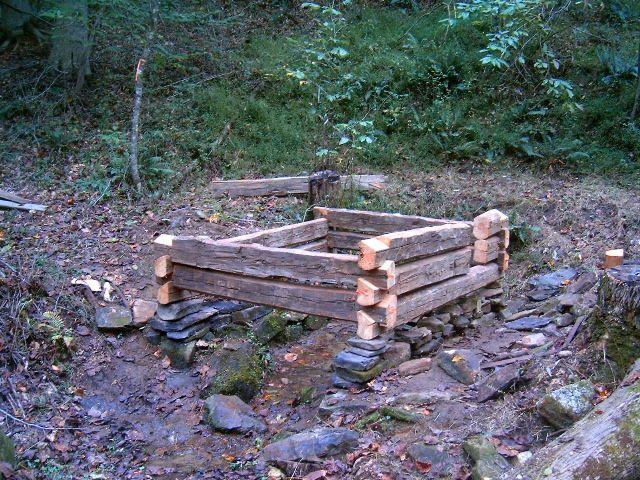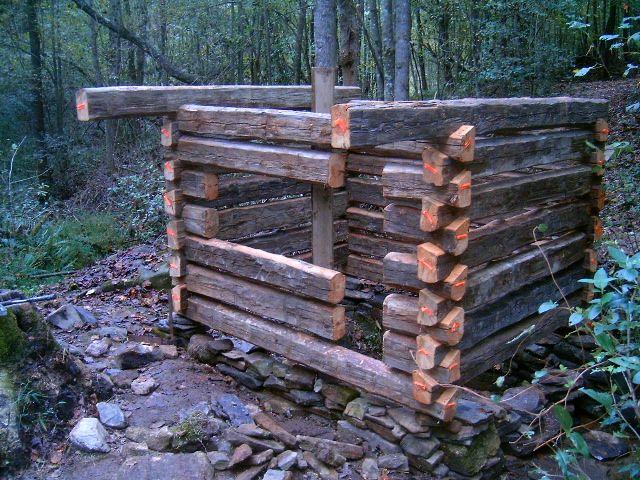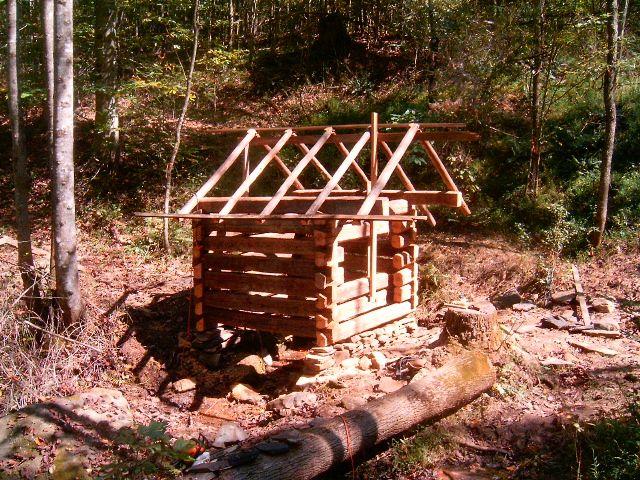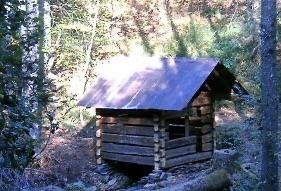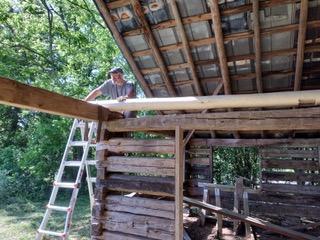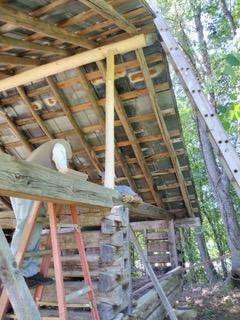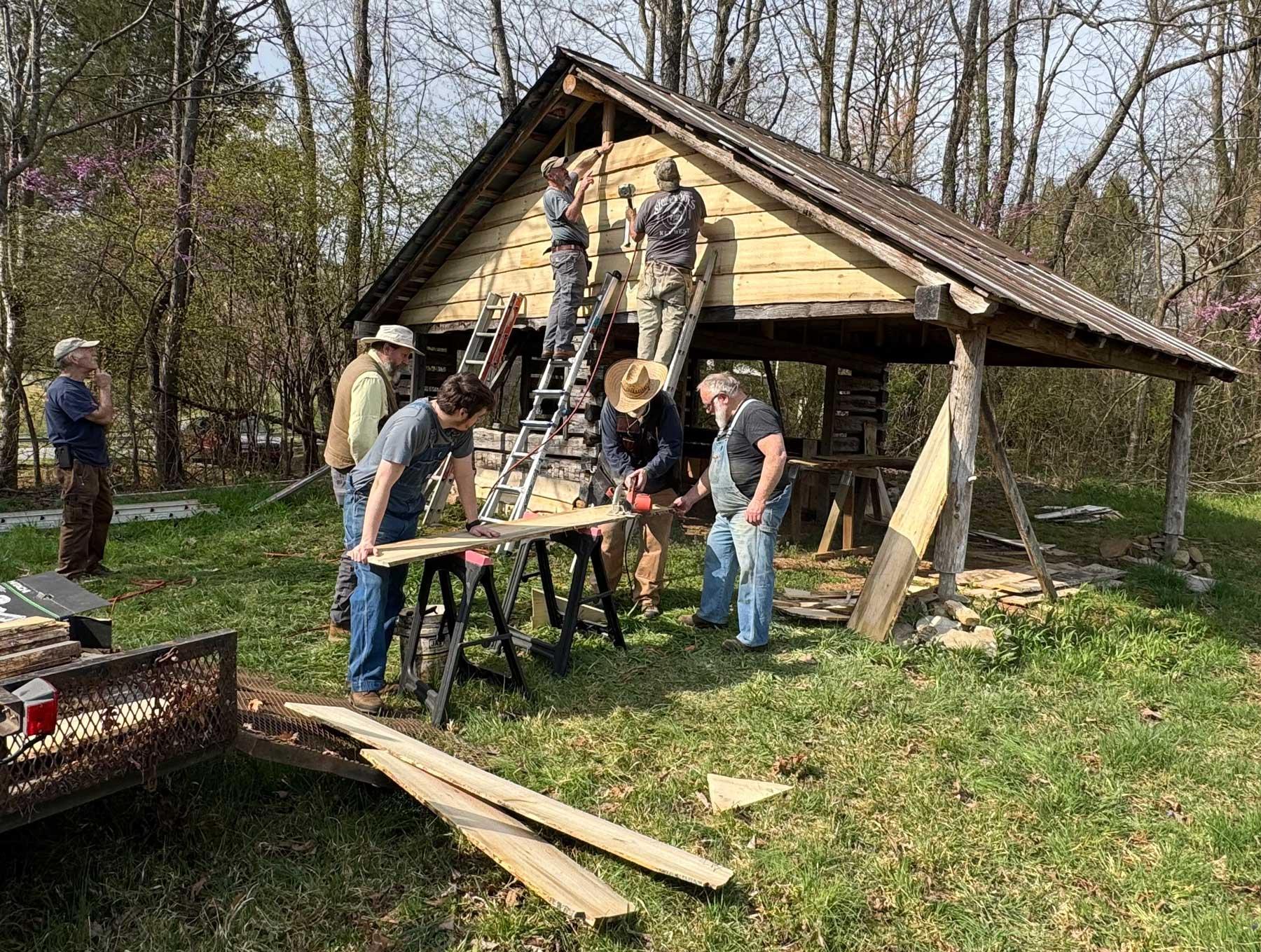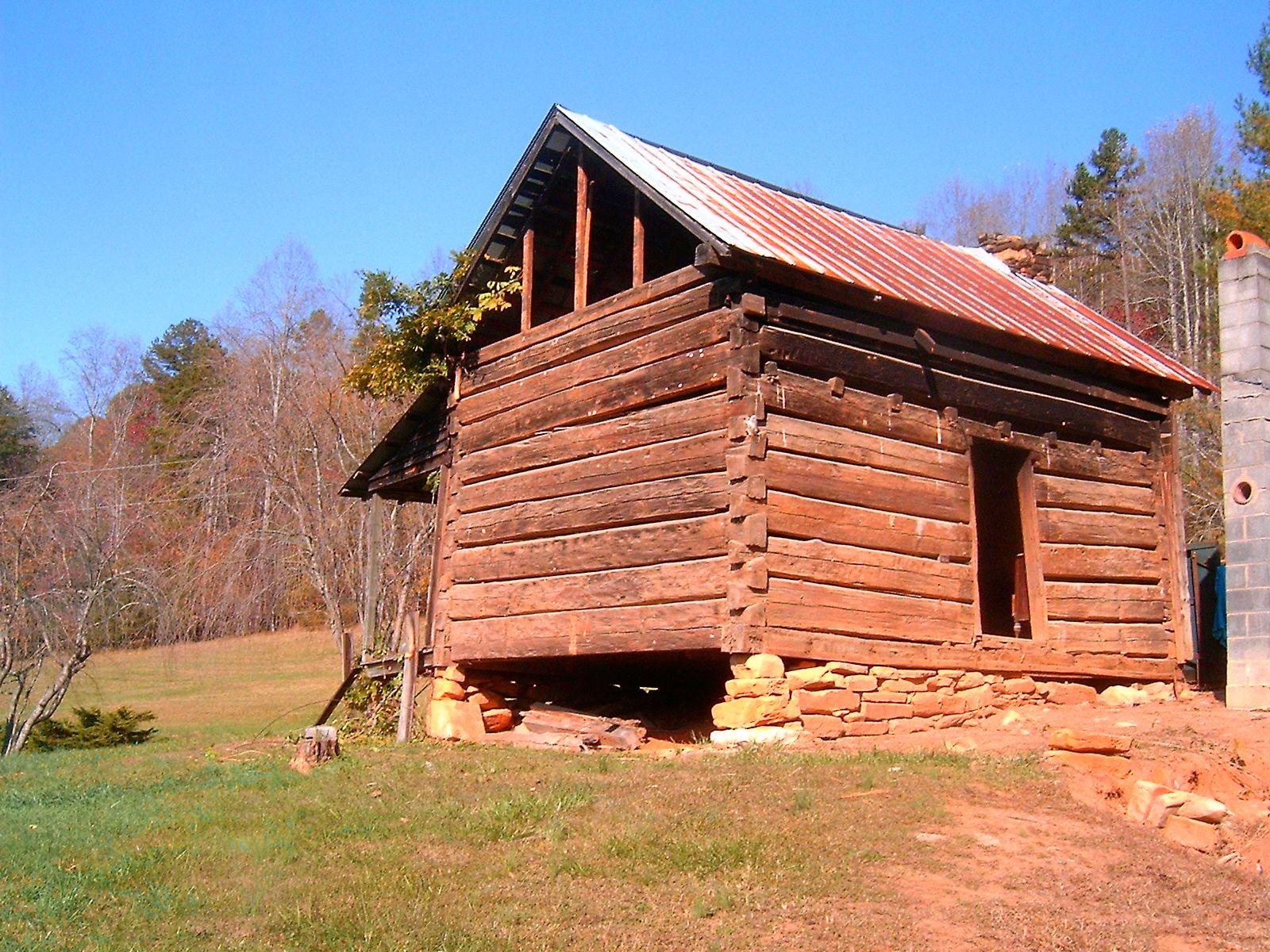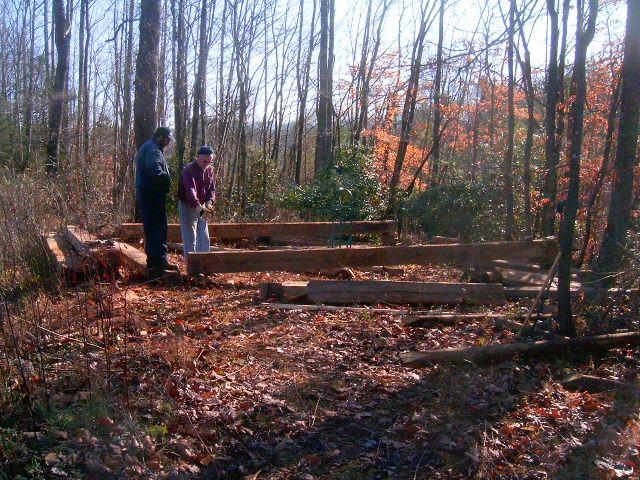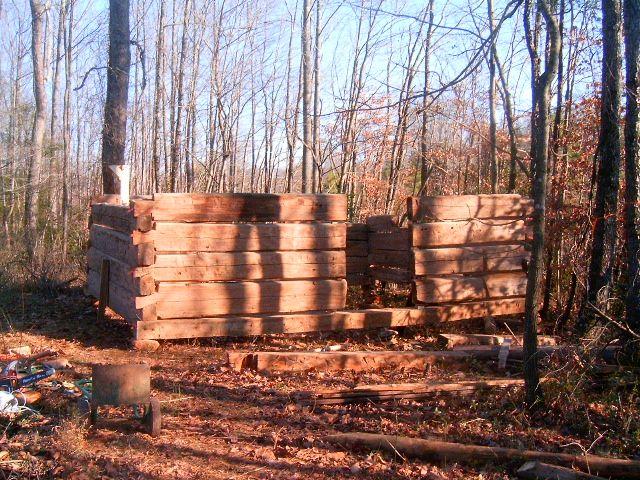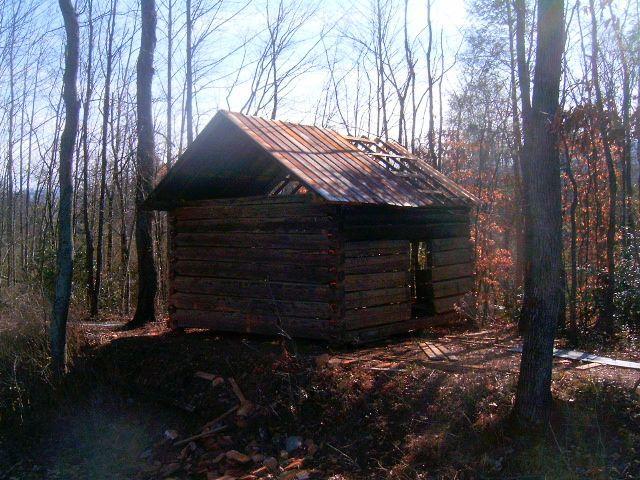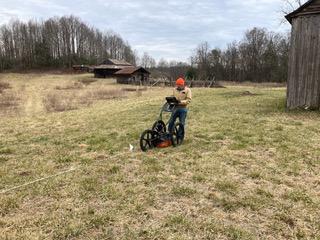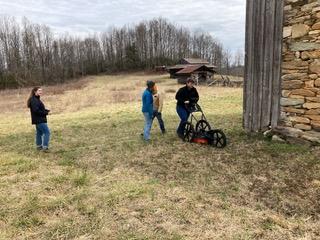Please refer to Farm Layout under History for maps of the farm and for more information about source of the maps.
Mike Hubbard, Director Emeritus of the Foothills Heritage Farm, orchestrated the development process to replace the farm’s former outbuildings. He lives in a house constructed of reclaimed logs and therefore understands how to deconstruct an original structure, number and label each log, transport, and rebuild. Re-created structures, no longer standing, due to deterioration over time but original to the farm, include a double-sided corn crib, blacksmith shop, spring house, and corpse house. To complete the development phase of the project, a kitchen (removed in 1938) on the house’s north side, a tobacco barn, and a smoke house will be constructed.
Logs, from old tobacco barns and a cabin, were cut to meet the specifications needed and were notched together to re-create structures original to the farm, replicating construction methods used in 18th and 19th century America. Old logs were recovered from buildings in Durham, Greensboro, Yadkinville, and Wilkes County. Although Mike oversaw the operation, donations of money and/or manual labor by family members made redevelopment possible. On occasion total strangers, curious about the careful dismantling of old buildings, pitched in by offering machinery and manpower to facilitate loading and hauling the logs to the farm. Mike documented each step of the reconstructed farm buildings photographically, with some examples shown here.
Dismantlement of Old Log Structures
Reconstruction of Double-Sided Corn Crib
Reconstruction of Spring House
Reconstruction of Blacksmith Shop
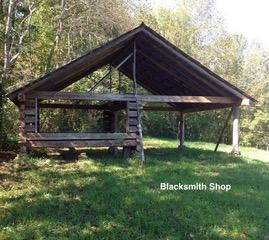 The Farm’s blacksmith shop was first registered on the Wilkes County, NC Tax List of 1798. This document states that Benjamin Hubbard had “1 cabin blacksmith’s shop, 15x15 on his farm.”
The Farm’s blacksmith shop was first registered on the Wilkes County, NC Tax List of 1798. This document states that Benjamin Hubbard had “1 cabin blacksmith’s shop, 15x15 on his farm.”
The shop was likely made of logs because it was described as a “cabin.” The term cabin was also used in documenting the kitchen and corn crib, while the house, which is also log, was noted as a hewn log dwelling.
“Members of the Wilkes County chapter (Wilkes Teaching Forge) of the N.C. Artist-Blacksmith's Association (NCABANA) are completing construction of a replica and fully functional, traditional log blacksmith shop approximately where the original blacksmith shop is believed to have stood. NCABANA members will use this as a place to teach the art of blacksmithing, for aspiring blacksmiths to practice and for public demonstrations. Lyle Wheeler of Millers Creek, former NCABANA president, is leading this effort as a public service project for the association. Wheeler is a renowned blacksmith and chairmaker, member of the Southern Highland Craft Guild and featured artist on the Blue Ridge Craft Trail.”
The Forge’s first step was to reset the rock foundation pillars. Next, was to secure the roof with a ridge bean and support. Trees from the farm were used for this stabilization. Wheeler describes that while the poles look new, eventually they will weather and blend into the existing older wood. In the near future, the group will add underpinning to the building for security and aesthetics. As time permits, a forge and anvil will be installed along with work tables and benches.
The blacksmith shop at the Foothills Heritage Farm will be one of the most visible and useful parts of the historic Hubbard Farm. It will benefit the farm and the community as it did originally, when it was an essential trade to farming.
Sources: Mary Bohlen and Jule Hubbard.
Work Continues
Reconstruction of Corpse House
Ground Penetrating Radar Survey
In 1938, the kitchen on the north side of the Benjamin Hubbard home was torn away due to deterioration. Several other dilapidated out-buildings were also removed. To hopefully reconstruct the kitchen, it was necessary to survey the ground to estimate original boundaries.
Appalachian State University’s Department of Geological and Environmental Sciences visited the farm in February 2022 and conducted a ground-penetrating radar (GPR) survey to help locate historic infrastructure, including the kitchen. GPR is a type of shallow geophysics.
Our appreciation to Dr. Ellen Cowan, Michala A. Puckett, Keith C. Seramur, and Scott T. Marshall of Boone for this valuable donation.
